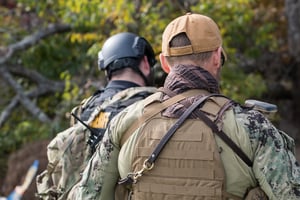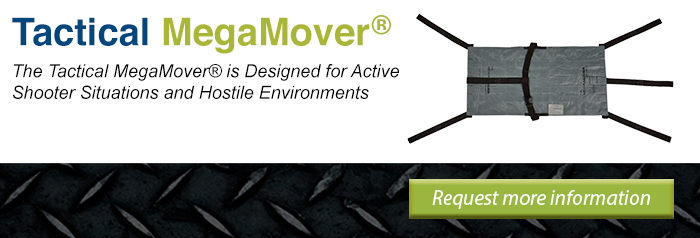 The role of the tactical medic has evolved in response to an increasing need to offer emergency medical services in warm zones — an area of indirect threat that’s close to the action. Active shooter incidents across the US, in particular, have sparked the rise in this new form of emergency medical service (EMS). Let’s explore what tactical medics do today and how they help keep you at the leading edge:
The role of the tactical medic has evolved in response to an increasing need to offer emergency medical services in warm zones — an area of indirect threat that’s close to the action. Active shooter incidents across the US, in particular, have sparked the rise in this new form of emergency medical service (EMS). Let’s explore what tactical medics do today and how they help keep you at the leading edge:
How different are tactical medics from a Rescue Task Force?
As we’ve outlined in a previous blog post, Rescue Task Forces (RTF) are comprised of responding EMS personnel, paramedics and fire personnel who are assembled quickly in an emergency. Tactical medics, meanwhile, are often specifically attached to a police response team like SWAT.
So while a Rescue Task Force may include trained EMS providers, they’re often hastily formed from groups like fire services teams partnering with law enforcement on a case-by-case basis and as part of their regular duties. They are also often limited to waiting for an area to be secured by law enforcement before treating individuals there.
Tactical medics, on the other hand, form part of a special operations team and are trained to enter hot/warm zones along with the law enforcement officers to provide treatment as needed. This means they get to victims that much faster.
What do tactical medics do?
Tactical medics may serve as physicians or EMS personnel on special operations teams. According to the Journal of Disaster Medicine & Public Health Preparedness, their primary goal is to ensure the safety of law enforcement missions and officers by providing preventative, urgent and emergency medical care to the responders. The role has its roots in military medicine and is based on the insight that earlier treatment to critically injured people can make the difference between life and death. For these medics, the focus is on stabilizing the victim until they can be transported to a trauma center for extensive treatment.
The role isn’t always high intensity — according to Associate Professor Matthew Levy from Johns Hopkins Center for Law Enforcement Medicine, a tactical medic’s primary responsibility is to keep their team healthy so they’re fighting fit when called upon. This expands the role beyond emergency medicine, blending in aspects of sports medicine and occupational medicine as well.
Keeping their team ready outside of the high risk scenarios and keeping them alive within them, that’s where tactical medicine comes in. “It makes everyone on the team safer”, says Levy, who was part of the first response team at 9/11. Most tactical medics are trained and licensed to carry firearms, while those who aren’t armed in the field are usually assigned a SWAT officer for protection.
Which tools and equipment do they typically use?
According to EMS1, tactical medics need to carry enough equipment and supplies to stabilize a critically injured person in a tactical/high risk environment. They’ll also be carrying at least 25–50 pounds of protective and non-medical equipment. Gas masks, eye protection, weapons and body armor all add to their load over and above their medical gear. Keeping this gear lightweight and mobile means they can carry more, further, and be more effective in the field. Generally, their medical gear will fall into the following categories:
- Medical Personal Protective Equipment (PPE) such as gloves, masks and eye protection
- Patient Assessment Tools needed to assess and measure vital functions
- Trauma Supplies designed to stop bleeding or seal penetrating wounds
- Airway Management that can include up to a full airway management pack
- Routine Materials for Minor Trauma and wound care
- Orthopedic/Sports Medicine Supplies specifically for team members with underlying orthopedic conditions which might be aggravated in the field
- ALS/Prescription Drugs that are only carried by tactical medics authorized by a Physician Medical Director/authorized as an ALS provider
- Patient Transport Systems like a roll-up stretcher
All first responders need collaborations they can trust
Both RTFs and tactical medics are tasked with saving lives in a high-pressure environment, making collaboration key. Whether in law enforcement or fire response, it’s essential to stock EMS medical supplies that can be trusted as much as the working partnerships. It ensures that the responders are as effective as possible in warm/hot zones when immediate care may mean the difference between life and death.
Graham Medical is dedicated to being a leading supplier of high-quality EMS equipment, with products like the MegaMover® Portable Transport Unit. This device is made for use in active shooter and hostile environments. Designed by Graham Medical engineers with input from experienced first responders, it’s just one way we’re giving tactical medics and RTFs on the front line the best chance for positive outcomes. Click here to request a free sample or contact us to learn more.

